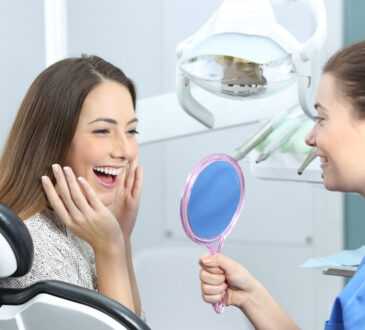
Orthodontic emergencies can be a source of distress and discomfort for patients undergoing orthodontic treatment. While rare, these unexpected issues can arise at any time, causing pain, disrupting treatment progress, and impacting daily life. As an orthodontic patient, it’s essential to be aware of the potential emergencies that may arise, know how to identify them, and understand the steps to take to resolve them quickly and effectively.
In this article, experts at a Houston, TX dental practice will delve into the world of orthodontic emergencies, exploring common issues, what to do in case of an emergency, and how to prevent them from occurring in the first place.
Exploring orthodontic emergencies
The following are common orthodontic emergencies:
- Broken Brackets: A bracket becomes detached from the tooth or breaks, causing discomfort or pain.
- Loose or Poking Wires: A wire becomes loose or starts poking the cheek, tongue, or gums, irritating.
- Lost or Dislodged Appliances: A retainer, aligner, or other orthodontic appliance is lost or dislodged.
- Mouth Sores or Irritation: Sores or irritation develop on the cheeks, lips, or tongue due to friction from orthodontic appliances.
- Toothache or Pain: Pain or discomfort occurs in a tooth or gums, possibly due to orthodontic treatment.
- Broken Retainer: A retainer breaks or cracks, requiring immediate replacement.
- Wire Poking the Cheek or Tongue: A wire pokes or irritates the cheek or tongue.
- Loose or Tightening Screws: Screws on appliances become loose or tighten excessively.
- Appliance Debris: Debris from an appliance, like a broken bracket, is stuck between teeth.
- Gum Swelling or Bleeding: Swelling or bleeding occurs in the gums due to orthodontic treatment.
What to do in case of an emergency?

In case of an orthodontic emergency, follow these steps:
- Stay Calm: Remain calm and think clearly to assess the situation.
- Contact Your Orthodontist: Reach out to your orthodontist immediately for guidance and to schedule an emergency appointment.
- Apply Ice or Heat: For pain or swelling, apply ice or heat packs to the affected area.
- Use Wax or Cotton Balls: For poking wires or broken brackets, use wax or cotton balls to cover the area and prevent further irritation.
- Take Over-the-Counter Pain Relievers: For toothaches or pain, take over-the-counter pain relievers like ibuprofen or acetaminophen.
- Avoid Self-Adjustments: Refrain from attempting to adjust or fix the issue yourself, as this can cause further damage.
- Keep the Appliance: If an appliance breaks, keep all the pieces and bring them to your emergency appointment.
- Seek Immediate Attention: If experiencing severe pain, swelling, or bleeding, seek immediate attention from your orthodontist or a nearby emergency room.
Some specific steps for common emergencies:
- Broken bracket: Use wax to cover the area and schedule an appointment.
- Poking wire: Use cotton balls to cover the wire and schedule an appointment.
- Lost retainer: Contact your orthodontist for a replacement.
- Toothache: Apply ice, take pain relievers, and schedule an appointment.
How to prevent orthodontic emergencies?
Here is how you can prevent orthodontic emergencies:
- Adhere to your orthodontist’s advice on oral hygiene, diet, and appliance care.
- Brush and floss regularly to prevent mouth sores and tooth decay.
- Refrain from consuming hard or sticky foods that can damage appliances or dislodge brackets.
- If you participate in sports, wear a mouthguard to protect your appliances and teeth.
- Regular check-ups with your orthodontist can help identify potential issues before they become emergencies.
While orthodontic emergencies are rare, it’s crucial to be prepared and know what to do in case of an emergency. By following your orthodontist’s instructions, maintaining good oral hygiene, and taking preventive measures, you can minimize the risk of orthodontic emergencies and ensure a smooth treatment process. Remember, if you’re experiencing any discomfort or issues with your appliances, don’t hesitate to contact your orthodontist for guidance and support.



